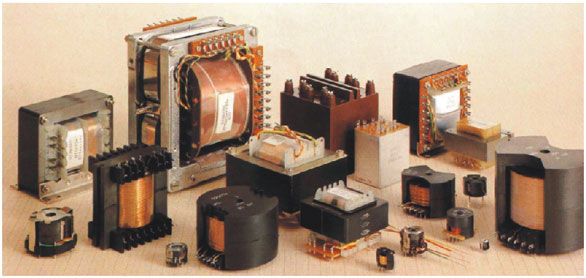
A transformer Iis a device that transfers electric energy from
one alternating-current circuit to one or more other circuits, either
increasing (stepping up) or reducing (stepping down) the voltage. Transformers
come in two varieties – step up, which increases the voltage or current, and
steps down, which decreases the voltage or current input. For example, the
transformer in your microwave Oven is a secondary transformer that is used to
supply around 2200Volts to the vacuum tube in the Microwave Oven.
USES OF TRANSFORMERS
Transformers are used for different purposes varying
purposes
1.
They are used to reduce the voltage of
conventional power circuits to operate low-voltage devices, such as doorbells
and toy electric trains.
2.
They are used to raise the voltage from electric
generators so that electric power can be transmitted over long distances.
How do transformers work
To understand the working of a transformer, we need to go
back in time, to Michael Faraday’s laboratory.
Michael Faraday can perhaps be called the father of the
transformer since it was his experiments that helped us understand
electromagnetism and develop devices like motors and generators.
In the late 1800s, when it was discovered that electricity
and magnetism were related phenomena, there was a race to try and build a
practical device that could harness the power of magnets to generate
electricity.
Faraday found out that electricity could be generated by
bringing a magnet close to a coil of wire. What he discovered was that voltage
will be produced only when the magnetic field was changing, that is, if he
moved either the coil or the magnet relative to the other.
In DC, the current flow is steady and so is the magnetic
field. Since the field is steady and not changing, there is no voltage induced
on the secondary and the transformer just looks like a normal coil of resistive
wire to the power supply. So, transformers do not work with DC currents.
He also found that when two coils of wire were kept close to each other, a current flowing in one coil could induce a current in the other coil. This principle is called mutual inductance and governs the working of all modern transformers.
Transformer Parts and Construction
The three main parts of a transformer:
1.
Primary Winding of Transformer
2.
Magnetic Core of Transformer
3.
Secondary Winding of Transformer
-
Primary Winding of Transformer
Which produces magnetic flux when it is connected to an
electrical source.
-
Magnetic Core of Transformer
The magnetic flux produced by the primary winding, that will
pass through this low reluctance path linked with secondary winding and create
a closed magnetic circuit.
-
Secondary Winding of Transformer
The flux, produced by the primary winding, passes through the core,
will link with the secondary winding. This winding also wounds on the same core
and gives the desired output of the transformer.
Read our Other Interesting Electrical Engineering articles
here.
Are you sourcing for quality transformers? Click here to start
sourcing
 Share
Share